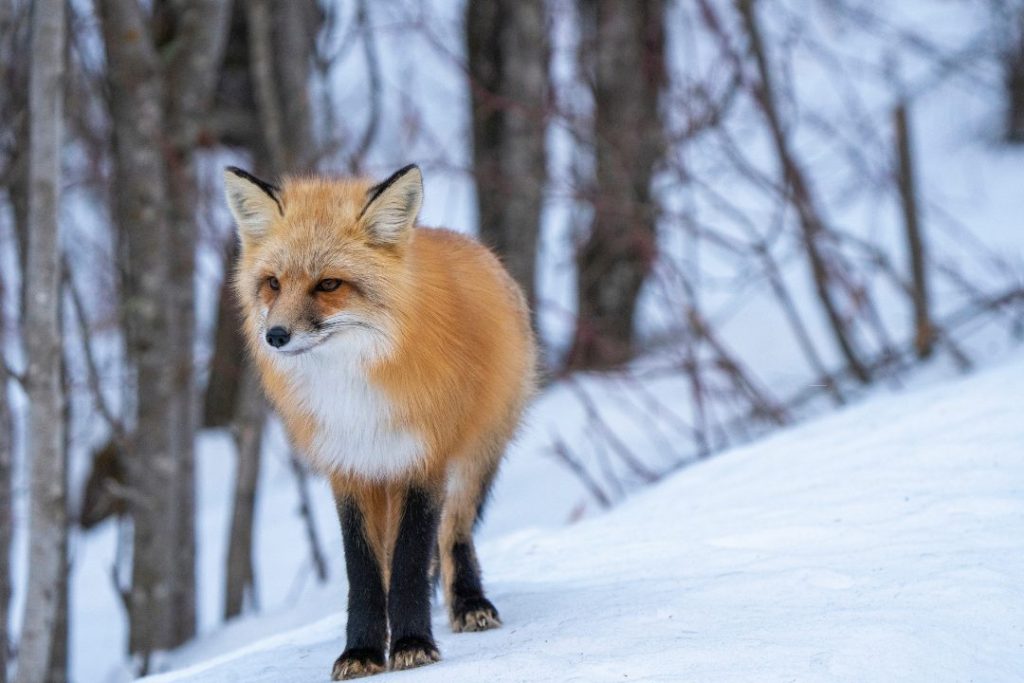
Amazing Animal Adaptations for Winter
- Lutful Ahmed
- August 9, 2024
- 7:01 pm
- No Comments
Winter brings a host of challenges for wildlife, from plummeting temperatures to reduced food availability. To survive the harsh conditions, animals have evolved remarkable adaptations that enable them to endure the cold and make the most of scarce resources. From hibernation to camouflage, these adaptations showcase the incredible resilience of the natural world.
Hibernation: The Ultimate Winter Survival Strategy
What is Hibernation?
Hibernation is a state of prolonged torpor that allows animals to conserve energy during the winter months when food is scarce. Unlike mere sleep, hibernation involves a significant drop in metabolic rate, body temperature, and overall physiological activity. This energy-saving strategy helps animals survive periods of extreme cold and limited resources.
Examples of Hibernators
- Bears: One of the most well-known hibernators, bears enter a deep state of torpor in their dens during the winter. They rely on fat reserves accumulated during the warmer months to sustain them throughout the hibernation period. Although their body temperature drops, it does not fall to the levels seen in other hibernators, allowing them to wake more readily if disturbed.
- Ground Squirrels: These small mammals hibernate in underground burrows, where they remain insulated from the cold. Their body temperature drops close to the freezing point, and their metabolic rate slows dramatically, allowing them to survive for months without eating.
- Bats: Many bat species hibernate in caves, mines, or other sheltered places. Their body temperature drops to match the ambient temperature, reducing their energy needs. Bats may also enter a state of torpor, a lighter form of hibernation, to respond more quickly to changes in environmental conditions.
Camouflage: Blending In with the Snow
The Role of Camouflage
Camouflage is a critical adaptation that helps animals avoid predators and increase their chances of survival. In winter, when the landscape is covered in snow, animals with effective camouflage blend seamlessly with their surroundings, making them less visible to both predators and prey.
Examples of Camouflaged Animals
- Snowshoe Hares: These hares undergo a dramatic color change in winter. Their fur turns white, blending with the snow and helping them avoid predators. In spring, their fur shifts back to brown, matching the thawed landscape.
- Arctic Foxes: Arctic foxes also change their fur color from brown or grey in the summer to white in the winter. This seasonal change provides excellent camouflage against the snowy Arctic landscape, making them harder for predators to spot.
- Snowy Owls: The snowy owl’s white plumage provides effective camouflage against the snowy backdrop of their Arctic habitat. This adaptation helps them remain concealed while hunting for prey, such as lemmings and other small rodents.
Insulation and Fat Storage: Staying Warm and Nourished
Insulation
Many animals have developed thick fur, feathers, or layers of fat to insulate themselves against the cold. Insulation helps retain body heat and maintain a stable internal temperature despite frigid external conditions.
Examples of Insulated Animals
- Moose: Moose have a dense layer of fur that traps air close to their body, providing excellent insulation against the cold. Additionally, their large size helps reduce the surface area-to-volume ratio, minimizing heat loss.
- Puffins: Puffins, which live in cold coastal areas, have a thick layer of down feathers beneath their outer feathers. This down provides insulation and keeps them warm while they dive for fish in icy waters.
Fat Storage
Fat storage is another crucial adaptation for winter survival. Many animals consume large quantities of food in the fall to build up fat reserves, which provide energy throughout the winter months.
Examples of Fat-Storing Animals
- Chipmunks: Before hibernating, chipmunks stockpile food in their burrows. They eat and store nuts, seeds, and other food items to ensure a steady supply of energy during their winter dormancy.
- Bees: Honeybees in a hive produce honey, which they use as a food source during the winter. The honey provides the necessary calories to sustain the colony and maintain a warm temperature inside the hive.
Behavioral Adaptations: Adjusting to Winter
Migration
For some animals, migration is an effective strategy to escape the challenges of winter. By moving to warmer regions, these animals avoid the cold and find more abundant food sources.
Examples of Migrators
- Monarch Butterflies: Monarch butterflies migrate thousands of miles from North America to central Mexico to escape the cold winter. They travel in large groups, navigating by instinct and environmental cues.
- Ducks and Geese: Many species of ducks and geese migrate south for the winter, seeking milder temperatures and open water where they can find food and continue their life cycles.
Conclusion
The ability of animals to adapt to winter conditions is a testament to the remarkable resilience of nature. Whether through hibernation, camouflage, insulation, fat storage, or migration, each adaptation plays a crucial role in helping animals survive and thrive despite the challenges posed by the cold. Understanding these adaptations not only enhances our appreciation for wildlife but also underscores the importance of preserving their habitats to support their continued survival.
